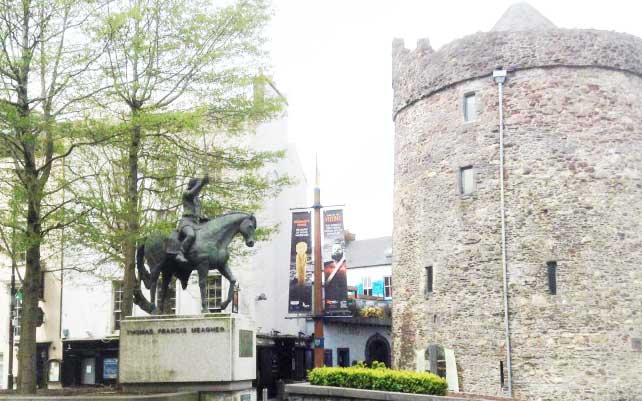Thomas Francis Meagher symbol of hope, loyalty, bravery and success in the face of severe adversary.
Thomas Francis Meagher is a fascinating character who influenced the course of Irish History, forever remembered as the man who gave us our Tricolour, the precious National Flag of Ireland.
He is known as one of Ireland’s great revolutionary heroes who helped inspire future generations to set out on the cause of revolution in Ireland, which would eventually lead to the establishment of the Irish Republic.
Thomas Francis Meagher is a timeless character who walks the pages of history, a character of such charisma, daring, intelligence, spirit and integrity that he has gone down in history as one of Ireland’s favorite sons.
His life, actions and achievements seem almost unreal for one man to accomplish, however, he was a man that created history and his legacy will echo though history forever. He was an Irish revolutionary, a journalist, a prisoner, a combat leader, and a governor. He is a man who’s life and times blaze a trail of excitement and wonder across our history books. A man of character, strong beliefs in the cause, of liberty, freedom and justice.
One of the world’s most famous Irish American heroes, forever linking Waterford to New York City in a wonderful historical bond that at times reads like a movie script.
Meagher was a man of deep conviction in the cause of Irish Freedom from British Rule and those passions were again put to good use when he fought on the side of The Union during the American Civil War.
Founding one of the United States Army’s oldest and most respected units, the Irish Brigade, which include the most decorated Regiment, The 69th Infantry Regiment, also known as “The Fighting 69th”, who still hold onto many traditions connected with Thomas Francis Meagher.
“I now bid farewell to the country of my birth – of my passions – of my death, a country whose misfortunes have invoked my sympathies – whose factions I sought to quell – whose intelligence I prompted to a lofty aim – whose freedom has been my fatal dream” Thomas Francis Meagher
The Early Life of Thomas Francis Meagher.

Thomas Francis Meagher was born in Waterford on August 3rd 1823 in what is now The Granville Hotel, Meagher’s Quay overlooking the River Suir.
He was the son of Thomas Meagher, a wealthy merchant, politician and twice elected Mayor of Waterford. Thomas Meagher was originally from St John’s Newfoundland. He had moved to Waterford in his youth. His Mother Alicia Quan was the daughter of a wealthy shipping company partner. He grew up on, what is now The Mall, Waterford.
Being from a wealthy family Thomas Francis Meagher was privileged to the best education that could be obtained at this time in Irish History.
He was initially educated at Mount Sion in Waterford City. Mount Sion was founded by the Blessed Edmund Ignatius Rice who founded the Christian Brothers and Presentation Brothers.
This was at the time when the Penal Laws were active and restricted the lives and rights of Irish Catholics and Protestant dissenters, including the right to education.
Meagher went on to study at Clongowes in Country Kildare. He left Ireland to study at Stonyhurst in Lancaster, England.
His father had encouraged him to study abroad as Trinity College Dublin was the only University in Ireland at the time and was a protestant establishment. He returned to Ireland in 1843 and his initial intention was to carry out his military service in the Austrian military.
However he was to find a cause that was closer to his own heart and became deeply involved with The Repeal Association, which was working towards the repeal of the Act of Union between Ireland and Great Britain.
From an early age he showed promise as an orator. He spoke with dignity and an eloquence that was far beyond his years. He became a regular and extremely popular speaker within the Irish Repeal Association and caught the eye and ear of one of Ireland most important historical characters, Daniel O’Connell.
Meagher was influenced by “The Nation” newspaper. He quickly rose to a role of prominence within The Irish Repeal Association. The Repeal Association wanted to repeal the act of union, which bound Ireland to British law and governance.
The Penal Laws aimed to control the majority Catholic population and Protestant dissenters population.
These laws prohibited the Irish doing many things including speaking Irish, the practice of Catholicism publically, deprived them of the right to education, Irish people were not allowed to own a horse worth more then £5, to name but a few.
In 1843 the Catholic population accounted for approximately 80% of Ireland’s population.
Meagher and his fellow Repealers believed passionately in an independent Ireland free from the rule of the British Empire.
This movement soon gained traction and was lead by Daniel O’Connell.
Until this point in history the Young Irelander movement had been a peaceful objective, however on the 28th of July Meagher made his famous Sword Speech, earning him the name “Meagher of the sword”.
He knew that there would never be a success with the Repeal Movement without the taking up of arms.
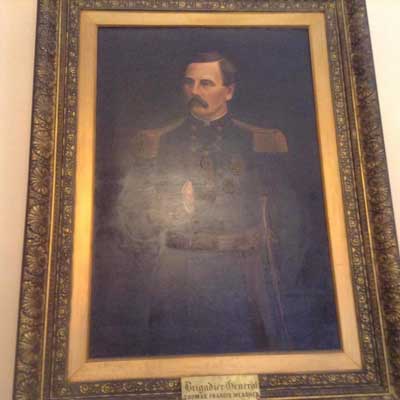
He believed strongly in the Young Irelander movement.
“Be it for the defence, or be it for the assertion of a nation’s liberty, I look upon the sword as a sacred weapon. And if, my lord, it has sometimes reddened the shroud of the oppressor – like the anointed rod of the priest, it has, as often, blossomed into the flowers to deck the freeman’s brow.
Abhor the sword? Stigmatise the sword? No, my lord, for at its blow, and in the quivering of its crimson light a giant nation sprang up from the waters of the Atlantic, and by its redeeming magic fettered colony became a daring, free Republic” Thomas Francis Meagher, “Sword Speech” 28th of July 1846.
In 1848 Meagher became a founding member of the Irish Confederation.
Along with a number of members of the confederation, he traveled to France to study revolutionary movements and activities during what has become known as the “The Year of Revolution”.
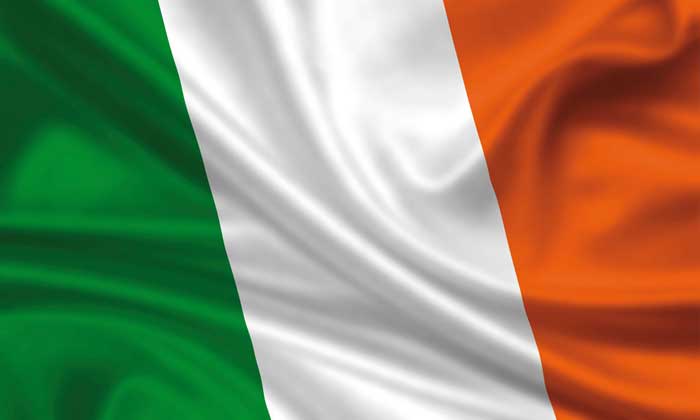
Upon his return from France he brought with him a new flag, the Irish Flag or Tricolour.
This Flag was made in France by French Women involved, with the French Revolution. During the 1848 Rebellion in Ireland Meagher hung the Tricolour for the first time from No.33 The Mall in Waterford City.
This flag hung proudly for 8 days. The green, white and orange Tricolour, represents the Gaelic Irish in green, English settlers in orange and white represents peace between the two. Now our National Flag it has come to represent a pride in our nation and the forefathers that fought for our liberty and freedom.
“The treason of which I stand convicted loses all its guilt, has been sanctified as a duty, and will be ennobled as sacrifice” Thomas Francis Meagher.
For his actions in the Rebellion of 1848 Thomas Francis Meagher was tried for treason along with other revolutionaries. He was sentenced to be hung, drawn and quartered; however, this sentence was commented to a life in exile.
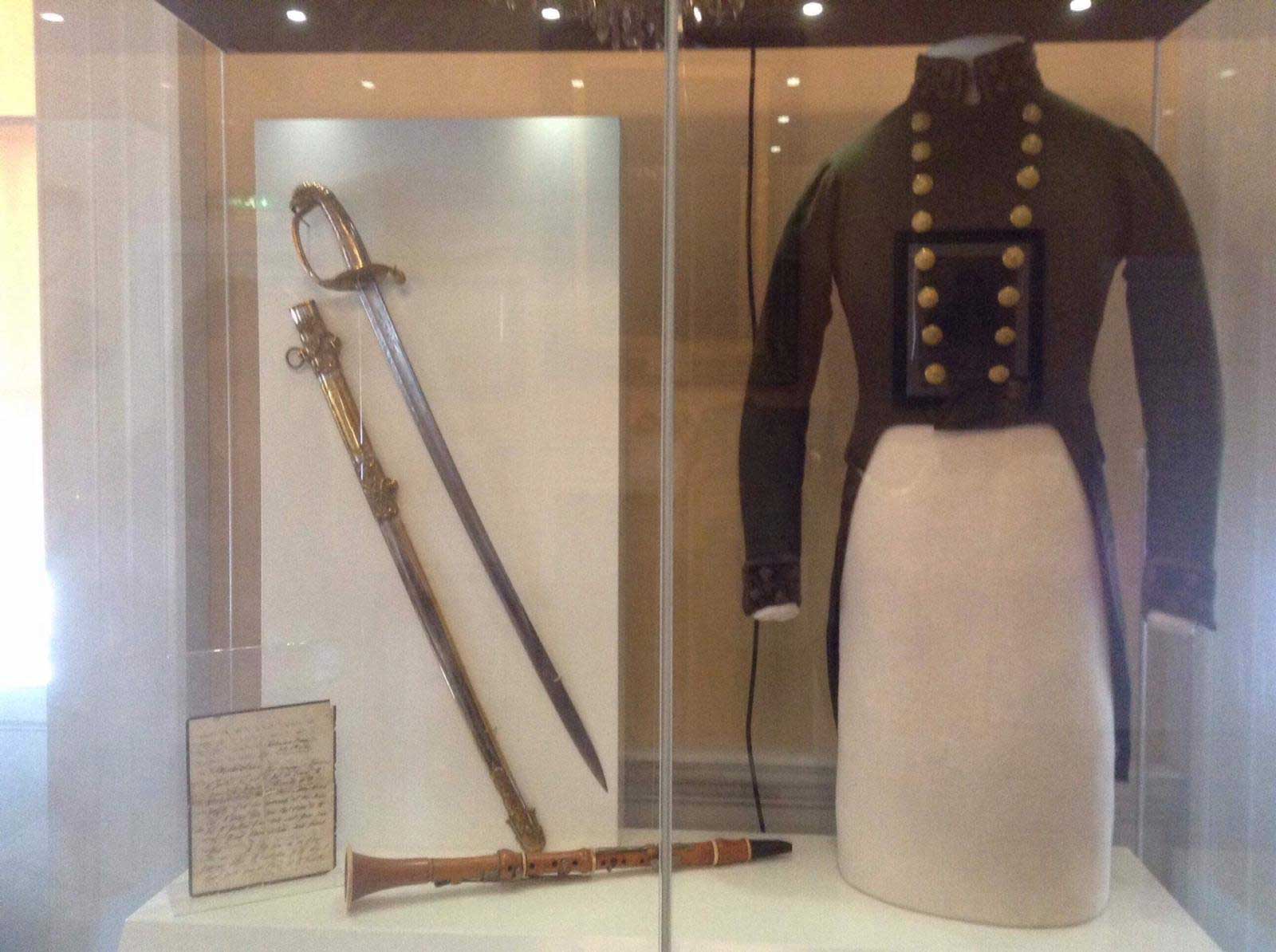
He was sent on a prison transportation ship to Van Diemen’s Land, which is now known as Tasmania. While in Van Diemen’s Land Meagher married his first wife, Catherine Bennett.
They had a child who died in infancy. Meagher escaped his land of exile and arrived in New York City in 1852. Catherine traveled to Waterford, Ireland where she lived with Meagher’s Irish Family.
She later joined him in New York City for a short time and returned to Waterford pregnant, she gave birth to a son also named Thomas Francis Meagher, who would unfortunately never meet his father. Meagher’s family raised him after his mother’s death in 1854.
Thomas Francis Meagher and The United States
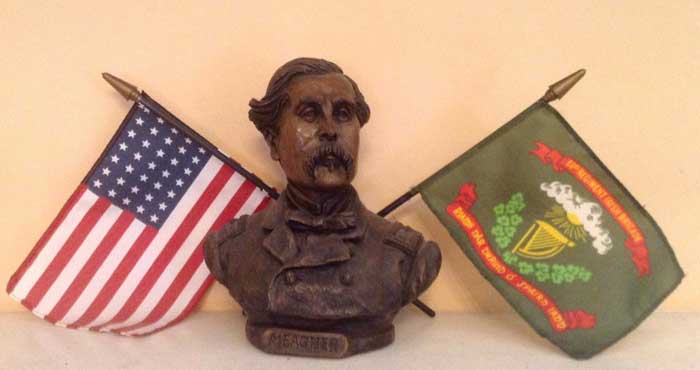
“It is not only our duty to America, but also to Ireland. We could not hope to succeed in our effort to make Ireland a Republic without the moral and material support of the liberty – loving citizens of these United States” Thomas Francis Meagher
Having settled and found a new home in New York City Meagher studied law and working sporadically as a journalist, he went on to found the newspaper “The Irish News”.
He became an American Citizen shortly after arriving in New York. He was also involved in the publication with a fellow Irish revolutionary, John Mitchel. This publication was called “The Citizen”.
This was strongly anti British and supported in the strongest of terms pro Irish sentiments that were radically charged.
While in New York City, Meagher was to marry his second wife, Elizabeth “Libby” Townsend. She was a wealthy New York socialite and a member of a wealthy and prominent New York family.
Her family initially objected to the marriage but eventually accepted Meagher. They were married in 1856 soon after Elizabeth converted to Catholicism. They remained married until Meagher’s death.
The American Civil War.
“It is not only our duty to America, but also to Ireland, we could not hope to succeed in our effort to make Ireland a Republic without the moral and material support of the liberty loving citizens of these United States”
Thomas Francis Meagher
Thomas Francis Meagher fought on the side of the Union in the American Civil War. Being a man who believed in freedom and justice, he believed strongly in the causes of the Union.
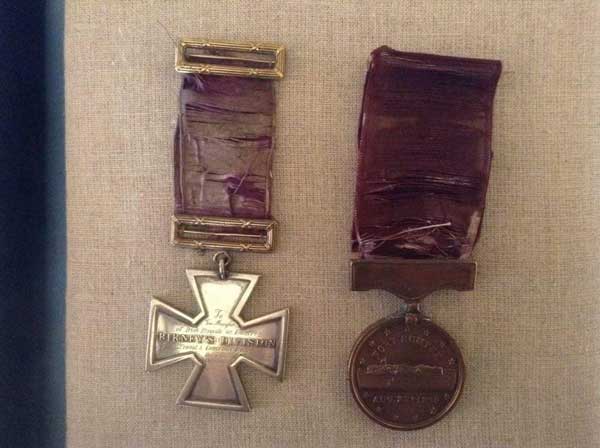
He gained a commission as a Captain in the New York State Militia, he implored all Irish immigrants to support and defend the cause of the Union. This is when he began recruiting in New York.
He advertised in local newspapers popular among the Irish immigrant communities of New York. He formed K Company of The 69th New York State Militia Regiment. This historic Regiment has gone on to become on of the most famed and historic Regiments in the history of the United States.
Due to their fierce fighting at most of the battles in the northeast, GEN Robert E. Lee gave the regiment the nickname “The Fighting 69th”, after their courageous assault at Fredericksburg. Meagher was engaged in some of The Civil Wars most hard fought and bloodiest battles.
After the Battle of Bull Run, Meagher made his way back to New York to form The Irish Brigade.
Meagher rose to the rank of Brigadier General rejoining his men at the Battle of Fair Oaks in 1862.The Irish Brigade soon gained the coveted reputation as one of the most formidable fighting forces in The Civil War.
The Battle of Gaines’ Mill was one of the high points of Meagher military career. The Regiment suffered massive losses at the infamous Battle of Antietam.
Massive losses were also incurred at the Battle of Fredericksburg which was one of the bloodiest battles of the Civil War. After the Battle of Chancellorsville Meagher resigned his commission.
However he was called back to active service following the death of Mick Corcoran. Meagher was assigned a duty in the Western Theater. He finally resigned from the US Army in 1865 as a Brigadier General.
After the close of the Civil War Meagher was given the honor of being appointed the Secretary of the newly established Territory of Montana but after arriving in the Territory, he was appointed Acting Governor.
Meagher’s death is the subject of much discussion and controversy. In 1867 Meagher was in Fort Benton, Montana receiving a stock of military hardware and munitions that had be sent by General Sherman for the Montana Militia.
While visiting a friend who was travelling onboard a steamboat on the Missouri River, he is said to have fallen overboard and was never seen again.
The exact circumstances of his death are still a mystery, and conspiracies range from accidental to foul play at the hands of a political rival. His body was never recovered, Thomas Francis Meagher was aged 43 when he died.
Thomas Francis Meagher left a lasting legacy and an impact on Irish American history. He is revered in histories from around the world. His life and actions within his short existence were inspirational.
His dedication to the cause of freedom and liberty inspired others to take up the cause of freedom in Ireland. His impact on Irish history forever remembered in our Tricolour.
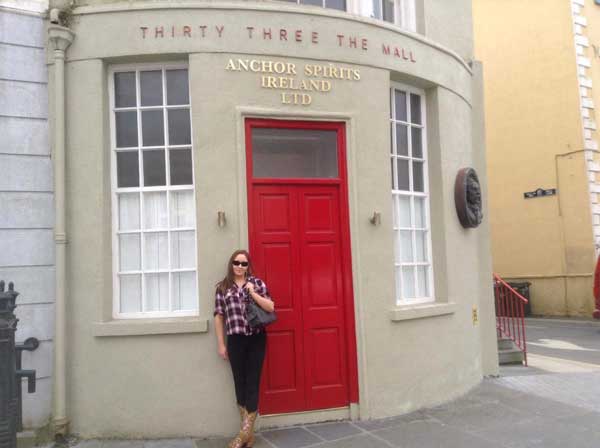
Celebrations of his life in Ireland and The United States still held dear by all those who remember one of Irelands most important hero’s. He is remembered in the ranks of “The Fighting 69th” with some of his traditions still used in official ceremonies.
The Tricolour Celebration in Waterford remembers the cost of our freedom with reverence, where Soldiers from the still extant 69th Infantry are hosted and come to pay their respects. President Kennedy spoke of Meagher on his visit to Ireland in 1963, presenting the flag of the Irish Brigade as a gift to the people of Ireland; this flag still hangs in the home of the Irish Parliament, Leinster House.
Many artifacts belonging to Thomas Francis Meagher are housed in The Bishop’s Palace of Waterford Treasures, Waterford, Ireland.
He is remembered in County Cork by a Military Fort that is dedicated in his name, As well as many statues in the United States and Ireland, Meagher is also remembered at the monument located at the Battlefield of Antietam which is in his honor.

